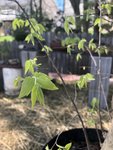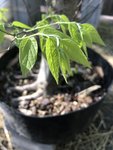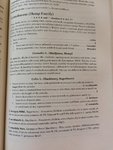Daniel son STL
Shohin
Hey guys. First off I wanna say I hope everybody is staying safe and is getting through these difficult times and possibly even using bonsai to help. It’s pretty easy to work on trees and stay distant socially, especially with the help one can get from.... bonsai nut!
Which brings me to my current situation. Collected and chopped same time. Been in this container for about 13 months or so and I have no idea what it is. Was about 12ft when I chopped it. All I’ve done is cut branches off that we’re growing from the same spot down to one to prevent unwanted bulging and I fertilized it.
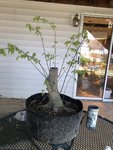
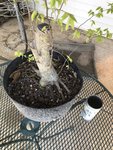
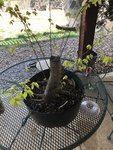
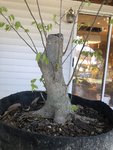
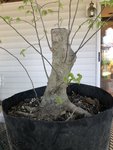
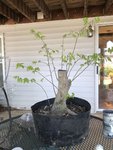
The two roots shooting out parallel with each other are hideous. Would love options on this matter.
Also just an overall plan for the tree is needed as branches are starting to harden off and need to be set in desired place sooner than later.
Some trees have main branches pulled down and out from the trunk.
Some trees have branches growing in a upward direction(almost like small individual trunks) with branches pulled down and out coming off these.
Below is a 30 sec vert to hopefully describe what I mean.
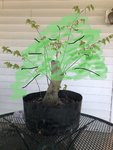
With the black lines representing branches pulled down off the multiple trunks. Guess this would be traditional broom style. That’s all I got.
If anybody knows what it is or has any ideas or options that would be fantastic.
Thanks and stay safe!!!
Which brings me to my current situation. Collected and chopped same time. Been in this container for about 13 months or so and I have no idea what it is. Was about 12ft when I chopped it. All I’ve done is cut branches off that we’re growing from the same spot down to one to prevent unwanted bulging and I fertilized it.






The two roots shooting out parallel with each other are hideous. Would love options on this matter.
Also just an overall plan for the tree is needed as branches are starting to harden off and need to be set in desired place sooner than later.
Some trees have main branches pulled down and out from the trunk.
Some trees have branches growing in a upward direction(almost like small individual trunks) with branches pulled down and out coming off these.
Below is a 30 sec vert to hopefully describe what I mean.

With the black lines representing branches pulled down off the multiple trunks. Guess this would be traditional broom style. That’s all I got.
If anybody knows what it is or has any ideas or options that would be fantastic.
Thanks and stay safe!!!

